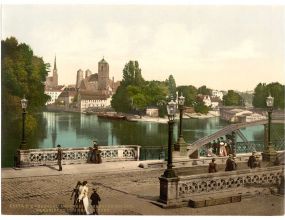
In the 18th century, the Roma continued to face repressive measures. Royal orders were issued to expel them from various regions, and they were often accused of various crimes.
In the Middle Ages, certain Roma communities sometimes enjoyed the protection of nobles or lords, but this largely depended on local circumstances and the relationship between Roma groups and the authorities in power. It is important to note that relations between the Roma and the various social categories of society were often complex and changing.
Certain nobles or lords might see an advantage in granting protection to Roma groups, particularly if they were itinerant merchants. Roma were often involved in itinerant trade, exchanging goods and services with local communities. By protecting them, nobles could benefit from the economic activity generated by these itinerant merchants, while reinforcing their own power by having allies among the Roma.
However, as previously mentioned, these/those relationships were not always harmonious, and tensions could arise between the Roma and local authorities despite the protection afforded. The nomadic nature of the Roma and their cultural differences could also give rise to mistrust and suspicion among the population.
It is difficult to generalize about these relationships, as they varied considerably from region to region and from era to era. In some cases, Roma groups enjoyed a degree of protection, while in others they faced persecution and discrimination.
First, in the south of France, in the region of Provence and Languedoc, where trade was often flourishing, some Roma communities were able to benefit from the protection of local lords due to their commercial activities. Roma were sometimes involved in the trade of various merchandise, which could be favorable for lords seeking to develop their local economy.
In more centralized regions like Île-de-France (region of Paris) and Champagne, where the monarchy exercised stronger control, Roma could be subject to stricter policies and increased surveillance. Royal authorities were often suspicious of nomadic groups that didn't conform to established norms.
In Normandy (Normandie) and Brittany (Bretagne), relations between Roma and local authorities may have been influenced by the cultural and political specifics of these regions. Some Roma communities may have found allies among the local nobility, while others may have faced distrust due to their status as "travelers".
Lastly, in the Alsace and Lorraine region (next to the actual German borders), these regions could have complex relations with the Roma because of their geographical location between France and the Holy Roman Empire. Local authorities could be influenced by imperial and regional policies.
As early as 1666, out of concern to prevent cross-border vagrancy and mistrust of their use by certain nobles in particular, Louis XIV decreed that all male Bohemians should be arrested and sent to the galleys - without trial. 16 years later, in July 1682, he confirmed and tightened this policy: all male Bohemians, in all provinces of the kingdom, were sentenced to the galleys for life, their wives shaved and their children locked up in hospices in order to "purge the kingdom" of "this evil spawn".
As for the nobles who might have had the idea of giving them protection, or often employing them as auxiliary troops: they risked the confiscation of their estates.
In short, the period leading up to the French Revolution was marked by persecution, expulsion and persistent marginalization of the Roma community in France. The Roma faced constant challenges due to their nomadic lifestyle and distinct cultural identity.